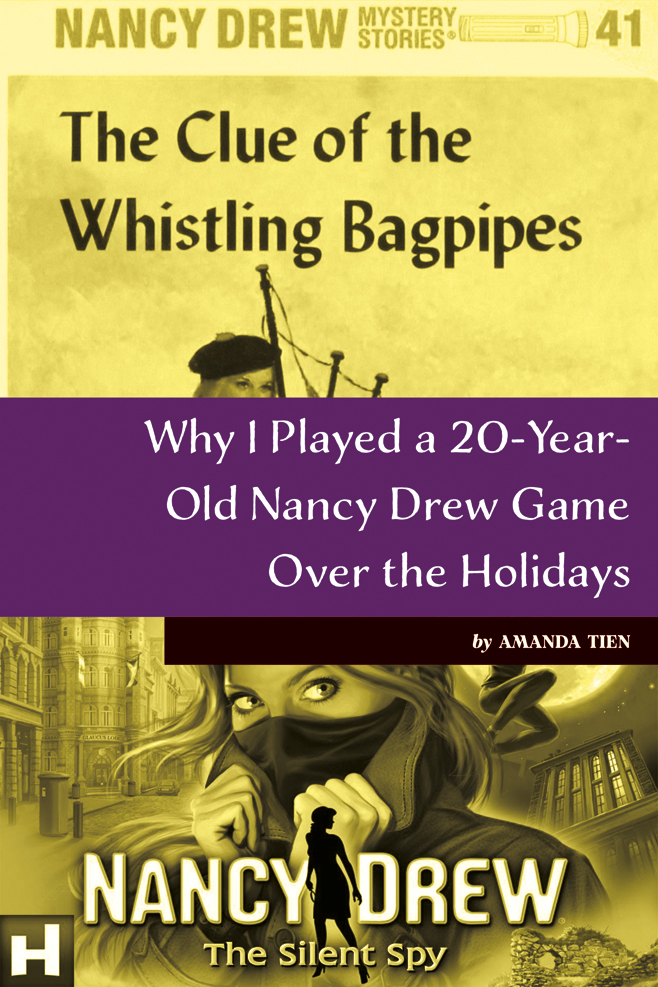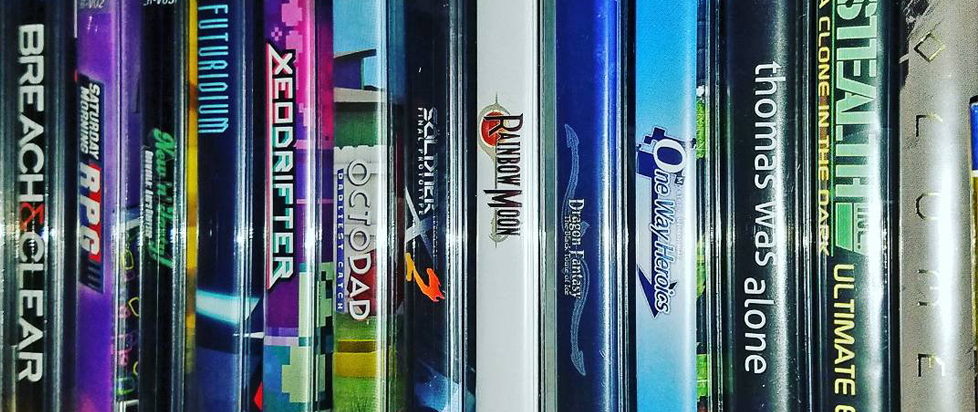
Why I Played a 20-Year-Old Nancy Drew Game Over the Holidays
This is a feature excerpt from Unwinnable Monthly #171. If you like what you see, grab the magazine for less than ten dollars, or subscribe and get all future magazines for half price.
———

In the basement of American military housing in southern Germany in 2004, my mother, sister, and I crowd around a bulky Dell computer. We have just installed Nancy Drew: Treasure in the Royal Tower, a birthday gift for me from someone who heard I was a nerdy, lonely kid.
We sit there, together, for hours. We guide Nancy through libraries, on snowmobiles, into hidden offices. We use pulley systems, decipher codes and learn about the movement of the stars. We interview suspects, occasionally upsetting them, and take more care next time. We take handwritten notes and, as we approach the finale, we pause and discuss who we think is the master thief. Together with Nancy, we solve the mystery.
* * *
HeR Interactive, a small studio in Washington state, began making Nancy Drew games in 1998, and in the early 2000s, hit a rhythm of releasing two a year. For my mother, sister and I, playing these games became a treasured ritual. We moved often, and the Nancy games became a touchstone of familiarity and comfort. Even when I went away to college, we’d stockpile Nancy Drew games for when I’d come back for the holidays and binge them together.
The “first-person adventures for girls” allowed for my sister and I, and other young players like us, to practice logic, exploration and collaboration. Some required reading in-game books to learn about real-world subjects. My sister was especially adept at mechanical puzzles and my mother was a pro at taking notes, able to recall at a moment’s notice what a suspect had said or how that key we just found might be useful in the greenhouse. I was, admittedly, probably annoyingly bossy. I loved being the main “clicker” with the mouse. My specialty was remembering every explorable location and how to get there.
The games, and the way we played them, challenged each of us to think outside of our comfort zones. I have memories of my mom printing out screenshots of particularly challenging puzzles and having the three of us do it separately by hand.
Besides just being productive spaces for us as young learners, the Nancy Drew games were a special reprieve for another reason. My father was active-duty military, and he was often away for field rotations, and later, deployments to the Middle East. We were often worried about him, and sometimes struggled to make sense of our rhythms without him. For the three of us, the Nancy Drew PC games invited us into what board game analysts Katie Salen and Eric Zimmerman call “the magic circle.”
In their 2003 book, Rules of Play: Game Design Fundamentals, Salen and Zimmerman describe how “the space of play is separate in some way from that of the real world,” both psychologically and physically, so much so that “the frame of a game creates the feeling of safety.”
Crowded around the computer, the troubles of our real lives faded away. Together, we were able to laugh, sigh, get frustrated (with the game and, occasionally, with each other), discuss, and cheer at resolutions. In the games, Nancy Drew was a hero come to life. And even better, we were her.
* * *
Nancy Drew debuted in The Secret of the Old Clock on May 1, 1930.
Growing up, I was often surrounded by mysteries. Murder, She Wrote was (and is) always on my grandmother’s television. I relished sick days because it meant I got to watch Miss Marple specials on PBS with my mom. But when I got that hardback, yellow-spined book, I finally had a mystery just for me. Even though it’s been almost 100 years since her introduction, Nancy has remained relevant.
Nancy’s ephemeral nature as a quintessential contemporary American woman is intentional. Researchers noted that the writers, illustrators and makers of Nancy Drew always prioritized this sense of being a “modern intellectual,” whatever that meant at the time of her portrayal. Nancy Drew made it through the Depression, World War II, the women’s liberation movement, all while maintaining values of helpfulness, a sense of justice and thoughtfulness (Melanie Rehak, Girl Sleuth: Nancy Drew and the Women Who Created Her, 2006).
As an investigator, Nancy is a consummate professional. She’s strong, but not rude. Smart, but not a know-it-all. She uses technology, but she’s not reliant on it. Some characters will remind Nancy she’s young or relatively inexperienced, but Nancy knows she’s got what it takes. Nancy was an early role model for me on how to be brave, how to stand up for what was right and to hold strong to an idea of my own self-worth.
The characterization even inspired the woman who voiced her in the games. “I grew up reading Nancy Drew books and loved them,” Lani Minella, who voiced Nancy in 31 of HeR Interactive’s games. “I feel very fortunate to have been Nancy’s voice for 16 years.”
* * *
Mystery videogames usually follow a certain formula of receiving a case, investigating for clues and interviewing suspects, then finding the “right” answer. There is a special kind of synergy between the genre and the medium; the act of playing is also one of inquiring, which naturally lends itself to the investigation process.

Empowered by crowdfunding, digital storefronts and social media to reach audiences, independent developers have created a variety of exciting investigations. Giant Sparrow launched the gloriously painful ancestry exploration, What Remains of Edith Finch, to critical acclaim in 2017, winning the BAFTA Award for Best Game and the Game Award for Best Narrative. When Apple Arcade launched in 2019, colorful locked room murder mystery Tangle Tower by brother-duo SFB Games was a flagship title.
I’ve written previously of my love for mystery games. Two indies stand out for diverging from the formula while still honoring the hallmarks of the genre.
In their 2021 game Overboard!, inkle subverted the norm by having players take on the role of a murderer who’s trapped in a time loop as they try to get away with their crime. Jon Ingold, narrative director at inkle shared, “In a traditional story, the protagonist’s actions are supposed to be motivated the whole way along, and the writer’s job is to ensure there’s a link in every step of the chain. We like to aim for that – gameplay where the protagonist’s actions and the player’s align, without one doing anything that the other doesn’t care about – and mystery is a fantastic way to solve that design problem.”
Paradise Killer, the 2020 debut from Kaizen Game Works allows players to accuse any suspect substantiated with any evidence, challenging players to consider their power, justice and truth.
“For me, the biggest treat when making Paradise Killer was creating the [fantasy] world that the mystery could live in,” Oli Clarke Smith, Co-Founder of Kaizen and Game Director of Paradise Killer. “We started with the outline of the mystery and then the outline of the world, shaping the world to fit the mystery.”
Surroundings are integral to giving higher stakes to an investigation, much less something interesting to explore. In the Nancy Drew games, players travel to far flung locales as Nancy to investigate strange circumstances – hauntings in Korea, ghosts in Texas, a kidnapping in Scotland. Games often featured lovingly rendered digital versions of a local traditional game, like Scopa in Italy. Each title was thoughtfully researched, and I often learned more interesting things about the world through these games than in my own geography classes.
Nancy’s worldliness inspired me about my own life as a frequently on the move Army brat. I didn’t get to see friends or family that much, but neither did Nancy, and she was doing just great.
———
Amanda Tien is a writer, strategist, and visual designer who loves playing video games while drinking coffee before anyone else wakes up. Her work can be viewed at amandatien.com.
You’ve been reading an excerpt from Unwinnable Monthly Issue 171.
To read the article in its entirety, please purchase the issue from the shop or sign up for a subscription to Unwinnable Monthly!





